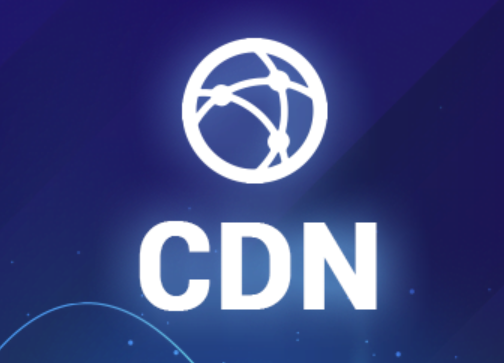Boosting Website Performance with CDN: From Basics to Advanced Optimization Strategies

In the digital age, a fast and reliable website is essential for retaining visitors, improving user experience, and achieving higher search engine rankings. Content Delivery Networks (CDNs) have emerged as a crucial tool for enhancing website performance by reducing latency, optimizing load times, and improving scalability.
This guide explores how CDNs work, their role in improving website performance, and advanced strategies to maximize their effectiveness.
1. Understanding CDN Basics
A Content Delivery Network (CDN) is a system of distributed servers strategically located across the globe. CDNs cache and deliver content (such as images, videos, and scripts) from servers closest to the user, reducing the time it takes to load a webpage.
Core Benefits of CDNs:
Reduced Latency: Minimizes the distance data must travel between the user and the server.
Improved Load Times: Delivers cached content quickly from edge nodes.
Enhanced Reliability: Distributes traffic to prevent server overloads.
Global Reach: Ensures consistent performance for users worldwide.
2. Foundational CDN Optimization Strategies
2.1 Static Content Caching
CDNs excel at caching static content, such as:
Images and videos.
CSS and JavaScript files.
Fonts and other non-changing assets.
Best Practices:
Set long cache expiration times for static resources.
Enable cache-busting for updated assets using versioning.
2.2 Compression
Use Gzip or Brotli compression to reduce the size of files delivered through the CDN, resulting in faster load times.
Implementation:
Enable compression for text-based assets like HTML, CSS, and JavaScript.
Monitor file sizes to ensure compatibility with user devices.
2.3 HTTP/3 and TLS
Enable HTTP/3 for faster and more secure data transmission between the server and user. This protocol offers:
Reduced latency.
Improved reliability over lossy networks.
Ensure that all traffic is encrypted using SSL/TLS for secure and trusted connections.
2.4 Global Load Balancing
CDNs use load balancing to distribute traffic across multiple servers, reducing server load and ensuring uptime.
Key Features:
Geo-based routing.
Traffic prioritization based on server health.
3. Advanced CDN Optimization Strategies
3.1 Dynamic Content Acceleration
While CDNs primarily cache static content, advanced CDNs optimize dynamic content using techniques like:
Real-Time Routing: Redirecting traffic to the fastest server.
Edge Computing: Processing user-specific requests closer to their location.
3.2 Image and Video Optimization
Use CDN tools to dynamically resize, compress, and format images and videos based on user devices and connection speeds.
Best Practices:
Deliver WebP images for modern browsers.
Use adaptive bitrate streaming for videos.
3.3 Cache Control and Purging
Implement advanced caching rules to control:
Cache durations for different asset types.
Automatic purging of outdated content.
Example: Purge a product page’s cache after inventory updates in an e-commerce store.
3.4 Multi-CDN Strategy
For global enterprises, combining multiple CDNs ensures:
Better reliability through redundancy.
Optimized performance across diverse regions.
Use a CDN orchestration platform to manage traffic between providers seamlessly.
3.5 Edge Computing and Serverless Functions
Integrate edge computing to execute logic closer to users, reducing server response times. Use serverless functions for:
Personalizing content.
Real-time analytics.
4. Monitoring and Fine-Tuning CDN Performance
Continuous monitoring is key to maximizing CDN benefits. Use CDN analytics to track:
Latency: Measure response times for different regions.
Cache Hit Ratio: Higher ratios indicate efficient caching.
Error Rates: Identify and address failed requests.
Tools for Monitoring:
Built-in CDN dashboards (e.g., Cloudflare, Fastly).
Third-party tools like Pingdom or GTmetrix.
5. Real-World Applications of CDN Optimization
5.1 E-Commerce Websites
Challenge: High traffic during sales events.
Solution: Cache product images and use real-time routing to handle spikes.
Result: Faster load times and increased sales conversions.
5.2 Media and Entertainment
Challenge: Delivering high-quality video to global audiences.
Solution: Adaptive bitrate streaming and edge caching.
Result: Buffer-free playback and better user retention.
5.3 SaaS Platforms
Challenge: Ensuring low-latency access for global teams.
Solution: Dynamic content acceleration and regional load balancing.
Result: Seamless collaboration and satisfied users.
6. Future Trends in CDN Optimization
AI-Powered CDNs: Predictive caching and intelligent routing.
Integration with 5G: Enhanced performance for IoT and mobile users.
Sustainable CDNs: Eco-friendly data centers for reduced environmental impact.
Conclusion
Leveraging a CDN is no longer optional for businesses seeking to deliver fast and reliable digital experiences. By combining foundational strategies like static caching and compression with advanced techniques like edge computing and dynamic content acceleration, businesses can unlock the full potential of CDNs.
Whether you’re running an e-commerce store, streaming platform, or SaaS application, optimizing your CDN strategy ensures faster load times, higher user satisfaction, and a competitive edge in the digital landscape.

